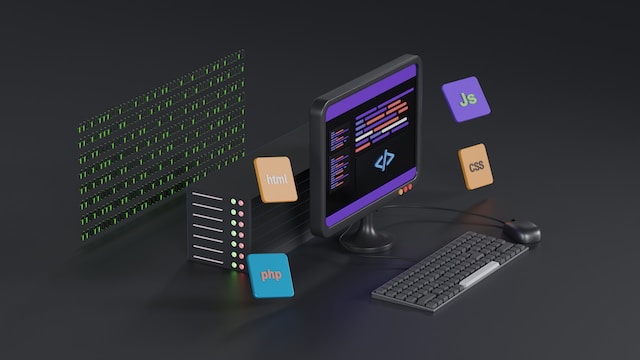How to choose the right programming language for your project
over 1 year ago

. . .
When developing a software project, selecting the right programming language becomes vital to ensure that your goals are effectively achieved. Programming languages differ in their capabilities and features, so several key factors should be considered when making this decision. Here are some guiding steps that can help you choose the appropriate programming language:
Understand project requirements: Before diving into selecting a programming language, it is essential to have a clear understanding of your project's requirements. What is the project's purpose? What features and functionalities should the application or software possess? Clearly defining the requirements will help you identify a language that aligns with them.
Research available programming languages: Study a variety of available programming languages and familiarize yourself with the advantages and disadvantages of each. You need to know their ability to handle the type of project you are working on and how efficiently they meet your needs.
Learnability and developer availability: Also, consider the ease of learning the language and the availability of skilled developers in that language. If you have a limited budget and want a development team to quickly grasp the language, choosing a popular and easily learnable language might be preferable.
Performance and efficiency: Speed and efficiency may be crucial for your project. Check the performance of the language in areas such as handling big data or executing complex operations. You may need a language that offers high performance if you are working on advanced applications or fast-paced websites.
Support and community: Ensure that there is an active community around the language and that good documentation and support are available. A strong community can be a valuable source of knowledge and assistance in case of any issues or challenges in the project.
Future scalability: Consider your future aspirations for the project and its ability to scale. It might be better to choose a language that supports growth and aligns with potential future requirements of the project.
Budget: Don't forget to take your budget into account. Some languages might be costly in terms of software licenses or associated development costs.
Choosing the right programming language depends on a combination of factors specific to each project. Individual requirements and future goals should be taken into consideration. Conduct thorough research and analysis to make an optimal decision for your project.
Similar articles

Unveiling the Fundamentals of JavaScript Programming
JavaScript, the cornerstone of modern web development, has evolved from a simple scripting language to a versatile and powerful programming language. In this comprehensive guide, we'll delve into the fundamental aspects of JavaScript programming, providing both beginners and seasoned developers with a solid foundation.

I Bet You Don’t Use These JavaScript Tricks and Practices
Flat Map in javascript is a great technique which you can learn here. Flat map essentially conbines techniques of map and filter Array method into one. I will suggest you to use flatMap() over combination of filter() and map().

Artificial Intelligence Techniques and Their Applications in Programming
Artificial Intelligence (AI) is an advanced field of computer science that aims to create systems capable of performing tasks similar to human intelligence. Among the domains that have greatly benefited from advances in AI is the field of programming.

User Experience Strategies for Designing User-Friendly Applications
Creating user-friendly applications is essential for ensuring a positive user experience and driving user engagement. User experience (UX) strategies play a crucial role in designing applications that are intuitive, efficient, and enjoyable to use. In this article, we will explore effective UX strategies for designing user-friendly applications.

Developing Web Applications: From Basics to Best Practices
Developing web applications is a vital and evolving field in the realm of information technology. Web application development enables the creation of interactive and customizable experiences over the web, making it a fundamental tool for modern businesses. In this article, we will cover the basics and explore best practices in web application development.